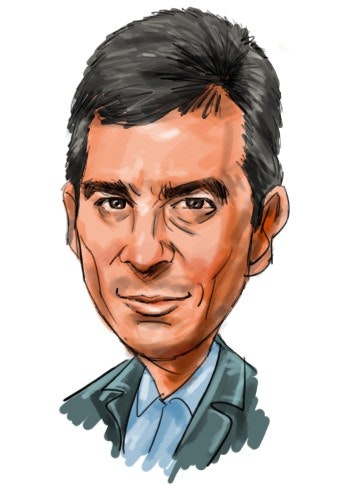The most infamous investment bank of them all, Goldman Sachs Group, Inc. (NYSE:GS), is up 13% since the beginning of August. Investors continue to worry about further federal regulation of the financial sector, and JPMorgan Chase’s London Whale losses have reminded market watchers that investment banking is a risky business to be in. Several hedge funds sold out of their positions in Goldman during the second quarter of 2012, though enough remained for the bank to make our list of the ten most popular financial stocks among hedge funds. Yet judging by the recent rise, Goldman may be making a comeback.
Like many investment banks, Goldman’s second quarter was not pleasant. Non-interest revenues fell 6% compared to the same quarter in 2011, and total revenue decreased 9%. The company trimmed expenses, particularly compensation, but net income still declined 11% despite the fact that Goldman Sachs Group, Inc. cut its share count fairly dramatically. Net earnings for the first half of the year are down as well, though a large preferred dividend last year has caused common shareholders’ net income to rise. Investment management revenues are about flat for 2012, with investment banking and market making both seeing declines. On a geographic basis, the EMEA region is actually holding up well; declines are being driven by the Americas and Asia.
Goldman Sachs Group, Inc. now trades at a trailing P/E of 17 and a forward P/E of 9. If the bank truly can close out the second half of 2012 with the expected $5.09 in EPS- versus the $1 it recorded in the second half of 2011- and then increase earnings per share by a further 15% next year compared to this year, it will prove a good value. Goldman’s five-year PEG ratio is only 0.7, so the sell-side continues to be optimistic when looking out over the next several years. From an asset point of view, the stock trades at 0.8 times book value. We think that Wall Street analysts might be being a bit too positive about the bank’s business, but the bank is a market leader in a profitable industry and carries a trailing earnings multiple in the teens- it’s probably a better buy than it is a short.
As we’ve mentioned, a number of hedge funds sold out of their positions in Goldman Sachs during the second quarter, including Dan Loeb’s Third Point and George Soros’s Soros Fund Management. However, other funds had bullish views, entering into the stock or increasing their stake. For example, billionaire Jim Simons’s Renaissance Technologies initiated a position of 1.2 million shares (see what other stocks Renaissance Technologies has been buying). D.E. Shaw had reported a position in the investment bank at the end of March, but more than tripled it over the course of the quarter to finish June with 1.3 million shares in the fund’s portfolio (find more stock picks from D.E. Shaw).
As another American pure-play investment bank, Morgan Stanley (NYSE:MS) is Goldman Sachs’s closest peer. Morgan is cheaper in the near term- it trades at 13 times trailing earnings and 8 times forward estimates for 2013, and only half the book value of its equity- but the five-year PEG ratio is actually higher there than at Goldman. Morgan Stanley also saw its business decline more last quarter than Goldman’s did: earnings were down 51% compared to the same period a year earlier, and revenue declines were about half that figure. We would also compare the investment banks to megabanks such as JPMorgan Chase & Co. (NYSE:JPM), Citigroup Inc. (NYSE:C), and Bank of America Corp (NYSE:BAC). These companies’ retail banking operations seem to be causing them to trade at lower multiples, with all three trading at 9 times trailing earnings. Given 2013 estimates they look closer to Goldman, with forward P/E multiples between 7 and 9. JPMorgan Chase also offers the largest dividend yield of these five banks, at 3.2%. Citi and Bank of America’s P/B ratios are about the same as Morgan Stanley’s while JPMorgan Chase also trades at 0.8 times book value. All four of these companies joined Goldman on our list of the most popular financial stocks among hedge funds. We would rather own Goldman Sachs than Morgan Stanley but out of this full list of stocks, we’d recommend JPMorgan Chase over Goldman; it is cheaper and has seen a large insider buy recently.
